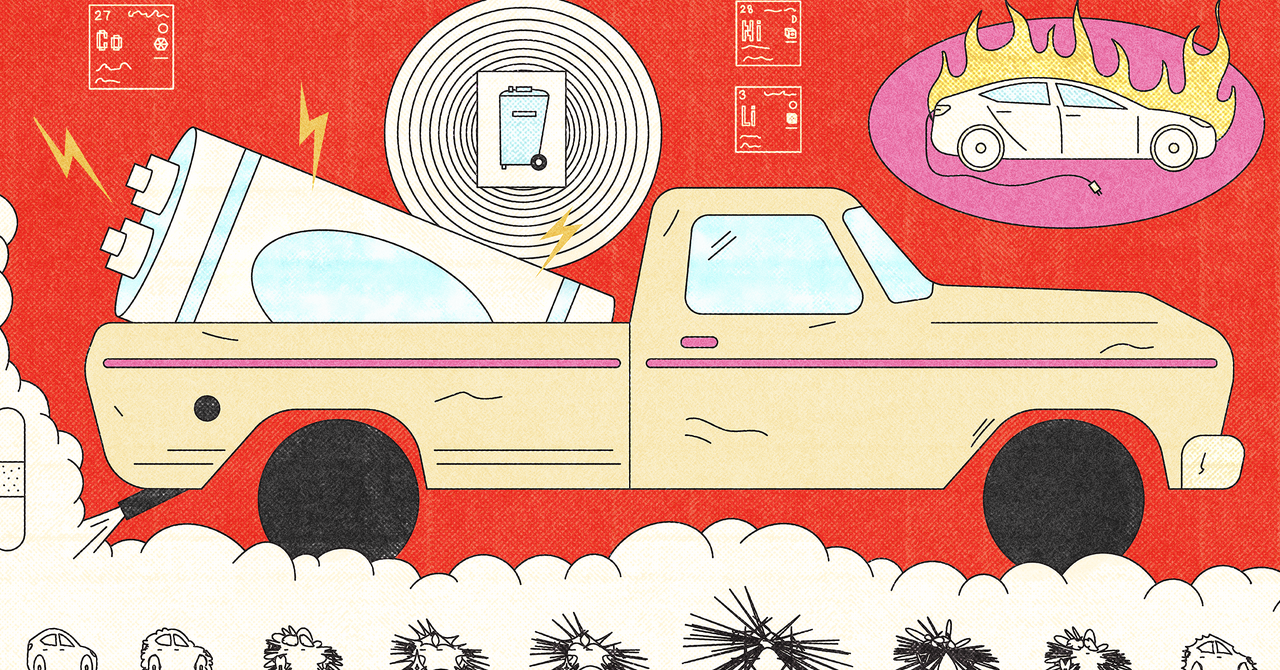
Hans Eric Melin, the founder of Circular Energy Storage, a consultancy that focuses on battery life-cycle management, agrees. Time will solve multiple problems. As more batteries die, the economies of scale will drive down costs. Another key, Melin says, is locating battery makers and battery recyclers closer to each other. He notes that the most highly developed battery recycling industry is in China, where 70 percent of lithium-ion batteries are made. In North America and Europe, there’s less manufacturing and less recycling. But some automakers have set up in-house recycling programs to recover materials themselves, while recyclers are also thinking about battery making. In September, Redwood Materials said it would begin building battery cathodes from recovered metals.
Still, others say some batteries will “leak” from these systems and not be recycled immediately. Some electric cars will end up abroad, as some 40 percent of gas-powered vehicles currently do. It’s a common fate because cars deemed unfit for US roads can still be shipped overseas and sold at a steep discount. Melin says a small number of older EVs are already moving abroad. In his research, he found it easy to track down older models of the all-electric Nissan Leaf in Ukraine, where the company did not sell them until this summer.
Sending used cars abroad is an important way of making electric vehicles accessible to poorer countries, Melin notes. But it raises the question of whether these places are prepared for safe and environmentally sound recycling when the vehicles die. “We have evidence from the e-waste trade that there can be bad versions of recycling,” Kendall says, pointing to places like India and Southeast Asia. “It’s a misery.”
Closer to home, other EV batteries may “leak” into shadowy corners of the domestic auto industry, with players that don’t have the money or desire to deal with waste. One result is stockpiling batteries in the hopes that recycling costs will eventually fall or that the value of the batteries will rise. “Some of it is wishful thinking,” Kendall says. Sometimes, the batteries wind up with enthusiastic but not always safety-minded DIYers. That can be useful, because those DIYers are likely to squeeze more electrons out of used batteries by repurposing them for new applications, like at-home energy storage. But some battery packs are broken down into individual cells or modules for repurposing, which means they’re more likely to go missing.
Government will likely get involved, too, as it did with the deposit system for lead-acid batteries. Last year, the European Union proposed regulations that would require battery and car manufacturers to handle recycling batteries, regardless of who owns them at the end of their lives. “The dismantler can turn around and say, ‘I don’t want this thing in my yard. Here, take it away, Honda or Tesla or Toyota,’” explains Latham of Salvage Wire. New standards in the EU would also dictate how much of the precious metals inside of new batteries will need to be recycled from past devices, rather than virgin material.
Regulating the battery industry requires a careful balance, explains Melin. Strict rules aimed at maximizing the greenness of EVs might slow the adoption of electric cars and lead to burning more fossil fuels—a far worse fate for the planet. A particular concern for automakers is a requirement with a high threshold of recycled materials to be included in new batteries; that could be difficult to achieve, especially in the near term, and could increase battery costs.


